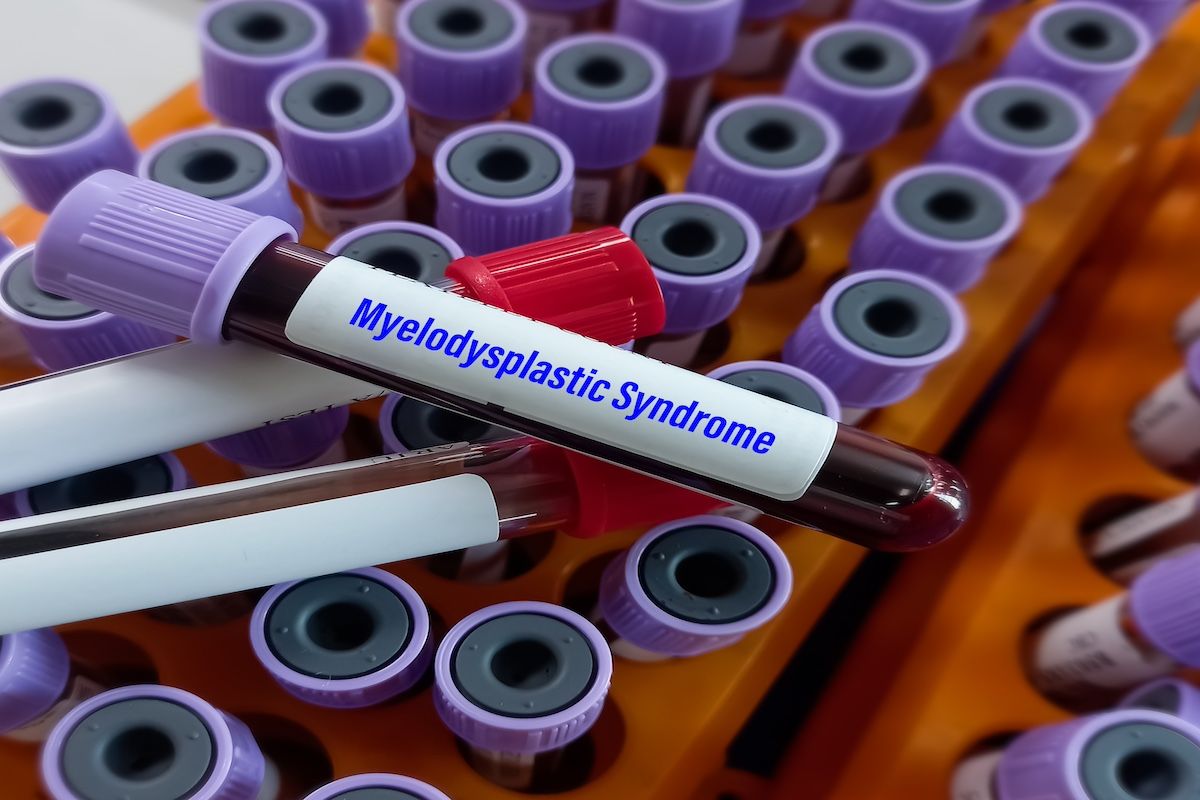Video
Higher-Risk MDS: When to Use HMA Therapy or Lenalidomide
Author(s):
Expert panelists discuss when it’s appropriate to consider or continue ESA therapy or blood transfusions in patients with MDS.
Transcript:
Bruce Feinberg, DO: Amer, invariably, there are patients who aren’t going to respond, whether they’re not responding because the hemoglobin isn’t rising because of antibodies to transfused blood, or because they’re not responding to an ESA [erythropoiesis-stimulating agent]. They’re going to have to go to a next line of therapy. It seems that for the vast majority, that’s going to be a hypomethylating agent [HMA]. That seems to me to be our next topic to get into. If you can talk to us a little about that, that’d be great.
Amer Zeidan, MBBS, MHS: Sure, I’m happy to talk about hypomethylating agents. But I have to say there are other options that we could do for patients with lower-risk MDS [myelodysplastic syndromes] who don’t respond or stop responding to ESAs after initial response. If the patient is still in the lower-risk category, hypomethylating agents are one option, but other things I discuss with the patient are the use of lenalidomide, a drug we touched on before, as well as the use of one of the newly approved drugs, luspatercept. That also has a specific approval for after ESA failure, when ESAs stop working in patients who have MDS with ring sideroblasts. That’s for a subgroup of patients, and that’s the FDA label, but I use lenalidomide in patients who don’t have deletion 5q, and I use luspatercept in patients who don’t have ring sideroblasts.
Bruce Feinberg, DO: Wait, are you using them outside of the label because you can, because you’re at Yale [University]? How do we translate that to the rank-and-file hematologists in the community?
Amer Zeidan, MBBS, MHS: I’d use it because there are data to support that they have activity in some patients. If you look at lenalidomide, for example, in patients who don’t have deletion 5q, around 25% of patients will respond. The duration of response isn’t as good as for patients who have deletion 5q. That’s around 30 weeks compared with 2 years if you have deletion 5q. However, it’s a pill. It’s not an injectable. It’s something you can take for 21 days each month. You can have some fatigue and some lowering blood counts. But hypomethylating agents can also do the same thing, with the exception that it’s an injectable, whether it’s subcutaneous or IV [intravenous].
Luspatercept is another option. There are few data supporting its use outside of patients who have ring sideroblasts, however we have an ongoing clinical trial looking at that, and there seems to be some activity outside of the ring sideroblasts from what we have seen in the phase 2 trial. So I discuss these 2 options in addition to hypomethylating agents and make the decision with the patient based on the potential adverse effects, the expected response rates, and what they’re comfortable with. Are they comfortable coming frequently to get injections? Can they do with some lowering of blood counts? How far do they live from the center? All of these factors are considered.
Bruce Feinberg, DO: I’m guessing you have this conversation with a fairly high level of confidence that if the patient is more inclined toward a non-hypomethylating agent approach, you’ll get that approved by their insurance?
Amer Zeidan, MBBS, MHS: Yes, that varies by geography. I feel lucky in the sense that I tend to get most of the treatments that I recommend approved for whatever reason, and I practice in Connecticut. However, I recognize that might vary based on the geography. If the patient has deletion 5q, clearly the insurance is going approve it after ESA failure. If the patient has ring sideroblasts, the insurance is going to approve luspatercept. But when the patients don’t have these, there could be pushback. It depends on the insurance and geography.
Bruce Feinberg, DO: Ryan, do you see that, where there’s that willingness to make that presentation of all these options up front? Even where some of those options may have evidence to support them but be outside of the label?
Ryan Haumschild, PharmD, MS, MBA: I need to get Amer’s Medicare and Medicaid administrator, their MAC [Medicare Administrative Contractor], down here because he must offer to give them some cookies or something to approve those in the frontline setting. Because typically we’re seeing a little more of the approval from a payer. The way we’re using luspatercept is we’re going through one of our subspecialists to make sure they’re seeing those ring sideroblasts from the community center to make sure we’re meeting the definition of it, because we did see some denials.
Bruce Feinberg, DO: So you’re seeing a little more resistance in going right to that presentation? There are lots of options.
Ryan Haumschild, PharmD, MS, MBA: We see the clinical benefit, but we definitely have to step through those ESAs and have that failure and those blood transfusions to get there. But we definitely see the value in some of these newer agents.
Bruce Feinberg, DO: Tracey, is that a real difficulty for your situation in terms of patient advocacy, to be able to talk about anything outside of the label?
Tracey Iraca: Absolutely. We leave that up to these guys. All we can do is make sure that the patients are seeing a doctor who’s willing to go that extra step for them and write those letters and go to bat for them in order to get the treatment and get it covered. It’s such a vast variety of patients. It all depends on their insurance. Some patients will say, “I have absolutely no troubles. My insurance covers everything.” And then for others, it’s a battle every step of the way.
Bruce Feinberg, DO: Amer, if we were to look at patients who fail ESA transfusion, what percentage of those patients would be 5q minus, what percentage would be ring sideroblasts, and what percentage in a typical community environment would then be left with an HMA as the only real choice for that next line of therapy?
Amer Zeidan, MBBS, MHS: Deletion 5q is a small subset of patients, so it’s important to emphasize that when we talk about deletion 5q, we’re talking about a specific syndrome in which the patient has only deletion 5q by itself or with 1 other abnormality, and they don’t have increased blasts. I’ve seen patients who have deletion 5q with complex karyotype and increased blast count getting lenalidomide, and that’s not the right way to use lenalidomide. It should be someone who has low risk, and with deletion 5q as the only abnormality or with 1 other abnormality. That’s 5% to 10% of patients at most, it’s not common.
With ring sideroblasts, if you go by whether they’re more than 15%, which is the indication, or more than 5% with the SF3B1, that’s around 15% to 20% of patients. But if you go by any ring sideroblasts, which isn’t the label, I’d say 30% to 40% of patients can have some ring sideroblasts. That leaves around 50% to 60% of patients with primarily an HMA option. Sometimes there’s confusion among insurance providers also, but even with physicians and patients, about the ring sideroblasts vs a blast. Some people can’t tell the difference. I always tell patients, “Ring sideroblasts are the good one to have, not like the regular blasts.” But sometimes people see blasts of 10% and they confuse the 2.
Transcript edited for clarity.





